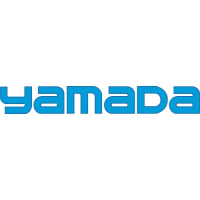26
5.3 Shutdown
5.3 Shutdown5.3 Shutdown
5.3 Shutdown
•Close the air valve of the pump and shut off the supply air.
CAUTION
CAUTIONCAUTION
CAUTION
•There is no problem in shutting down the pump with the flow valve closed while air is being
supplied; however, if this condition continues for many hours while there is nobody watching the
pump, it may continue running when there is a leak from the pump or piping, and fluid may
continue flowing out of the position of leakage. Upon finishing your work, release the internal
pressure from the pump and close the air valve (see 5.4 Releasing the pressure).
•When the pump is shut down while pumping slurry, particulate matter contained in the slurry
will be deposited and get stuck inside the out chamber. If the pump is started again as-is,
the diaphragm may be damaged or the center disk may be overloaded, and this may cause
damage such as bending of the center rod. After finishing your work, purge the remaining fluid
from the pump (see 6. Method of cleaning on p.27).
5.4 Releasing the pressure
5.4 Releasing the pressure 5.4 Releasing the pressure
5.4 Releasing the pressure
1) Make sure that the air valve of the pump is closed.
2) Shut down the air compressor or close the valve on the air-supply side of the peripheral equipment.
3) Close the flow valve on the discharge side, start slowly opening the drain valve, and discharge the fluid
under pressure.
4) Open the air valve of the pump and then start running the pump, and discharge the remaining air.
5) After making sure that the pump has been shut down and the pressure has been released, fully open the
regulator, and close the air valve and drain valve of the pump.
CAUTION
CAUTION CAUTION
CAUTION
•Keep a vessel below the relief valve to catch any drain off.
•Fluid under pressure will gush out as soon as you open the valve, so be careful.
•If the pump will be unused for a prolonged period, purge and clean the pump (see the
Operating caution on p.4,5 and 6).

